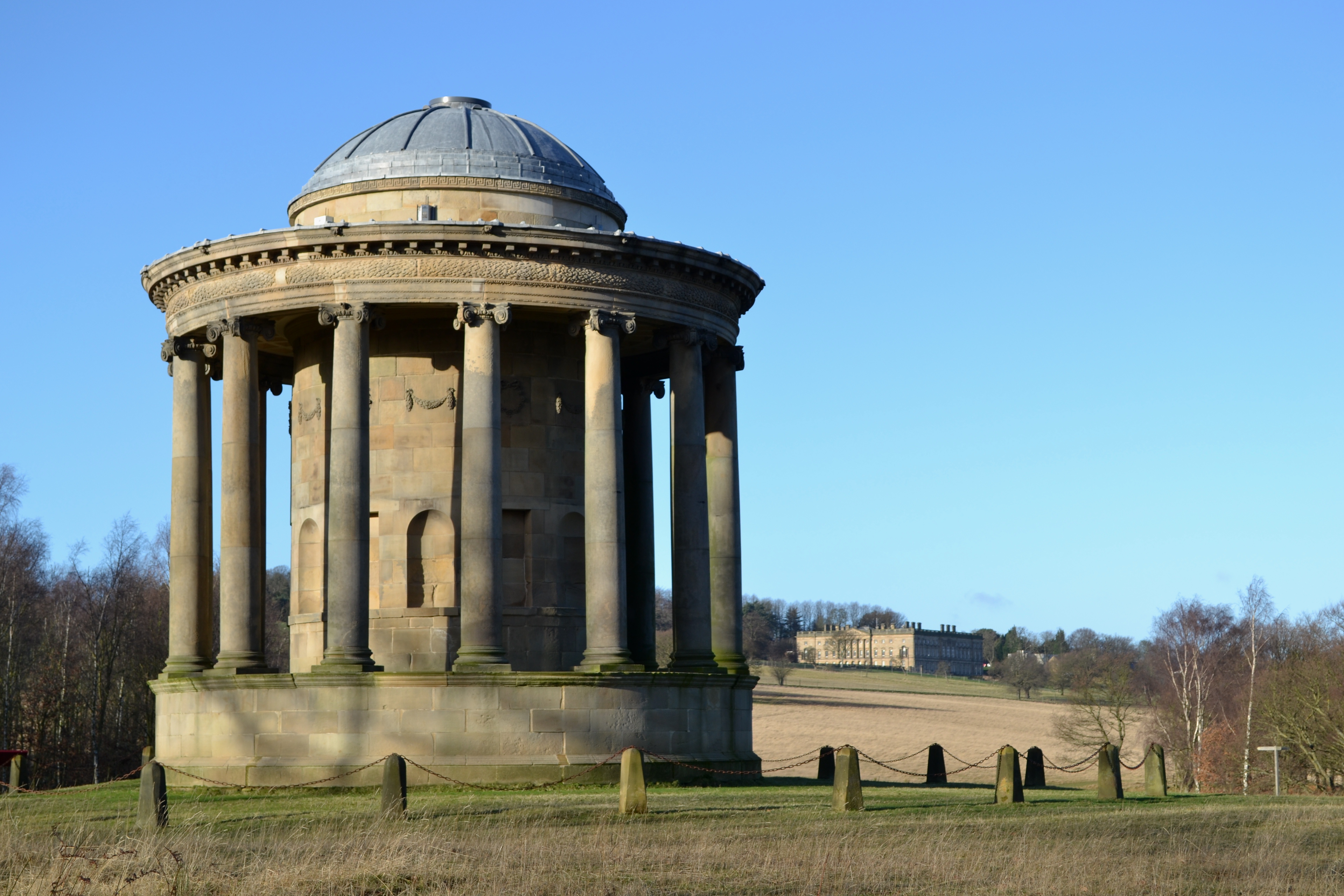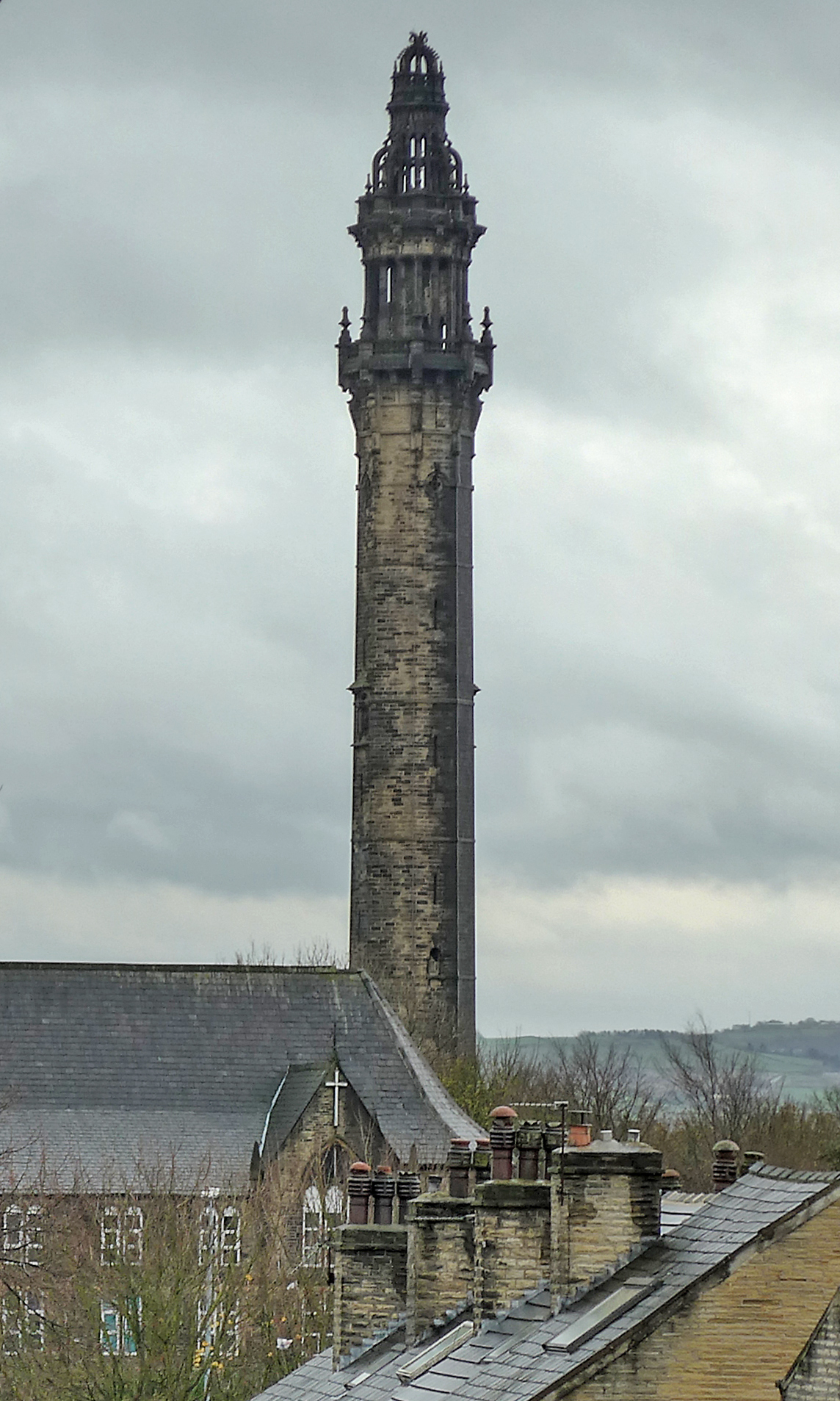Wainhouse Tower is a landmark folly
Ornamental structure with no practical purpose, built to enhance a designed garden or landscape. and Grade II* listed buildingStructure of particular architectural and/or historic interest deserving of special protection. in King Cross, Halifax, West Yorkshire.[a]Wainhouse Tower is considered a folly because it was never used for its original purpose, but during the Second World War it was used as an observation post.[1] It was built between 1871 and 1875 and is 275 feet (84 m) tall. The structure has a square base, and its shaft is octagonal in plan. Its elaborate top, reached after 403 steps, has a bracketed gallery and two-stage lantern, the upper stage open with ogee cap. It was intended as a curiosity and a very prominent landmark.[1][2]
John Edward Wainhouse inherited the Washer Lane Dyeworks in 1854. Smoke pollution was a problem in the town, and the dyeworks was part of the problem, so Wainhouse decided to build a beautiful chimney connected to the dyeworks by an underground flue. Architect Isaac Booth started its construction using local stone in 1871, but left the project following a dispute.[b]The dispute was between Wainhouse and Sir Henry Edward, who complained that the tower would be tall enough to overlook his nearby estate at Pye Nest.[3] Richard Dugdale took his place, taking on responsibility for the elaborate upper section. The tower was completed in September 1875, at a cost of £15,000,[1] equivalent to about £1.75 million as at 2021.[c]Calculated using the GDP deflator.[4]
After Wainhouse’s death the tower, which had never been used as a chimney, was offered for sale by auction. It had several owners until 1918, when the Halifax Courier organised fundraising to enable its purchase by Halifax Corporation; ownership passed to the corporation in May 1919.[1] As a result of the reorganisation of Local Government in 1974, ownership of Wainhouse Tower passed to Calderdale Council.[3]
The building was closed to the public in 2008 to allow for extensive renovations.[3]
Notes
| a | Wainhouse Tower is considered a folly because it was never used for its original purpose, but during the Second World War it was used as an observation post.[1] |
|---|---|
| b | The dispute was between Wainhouse and Sir Henry Edward, who complained that the tower would be tall enough to overlook his nearby estate at Pye Nest.[3] |
| c | Calculated using the GDP deflator.[4] |


